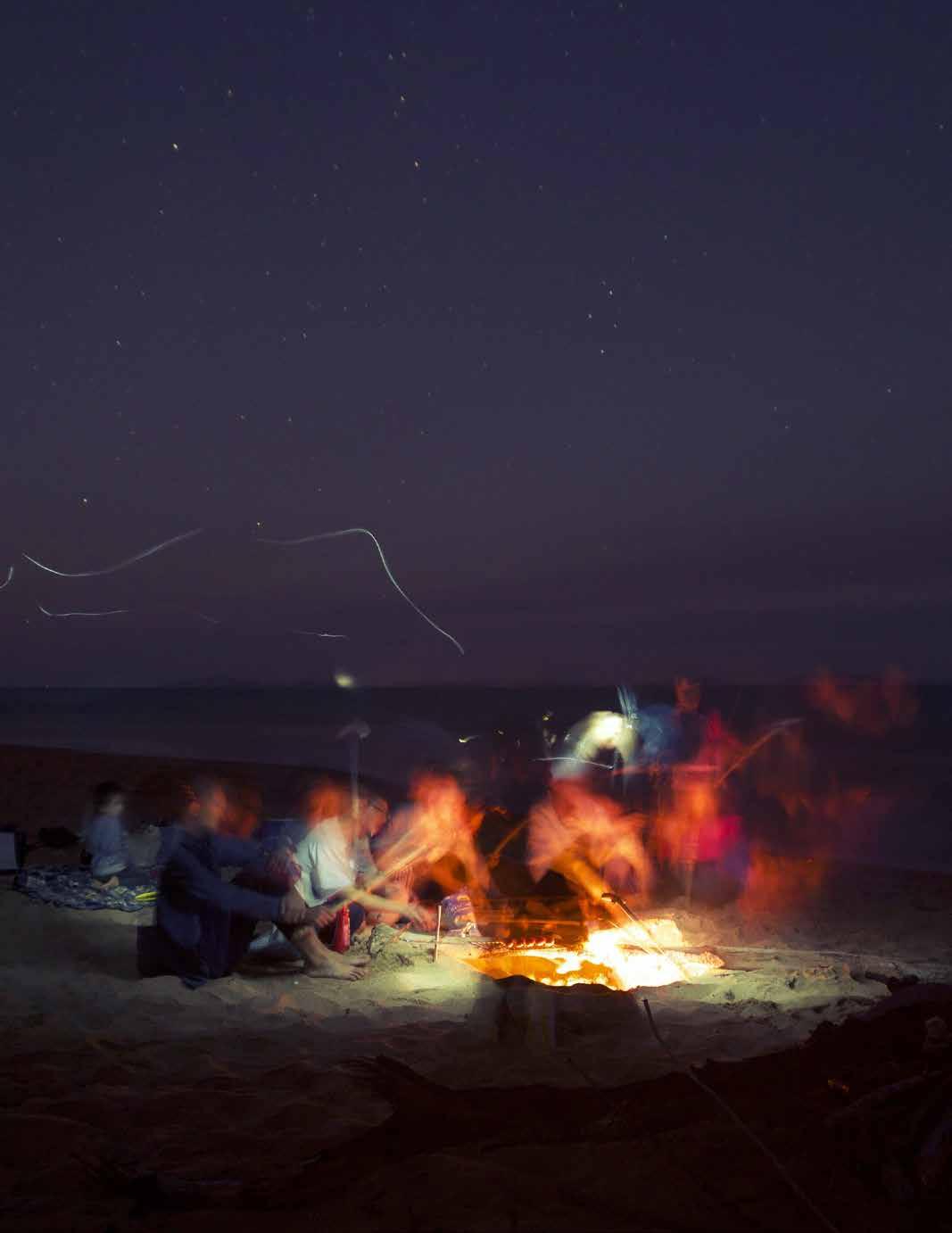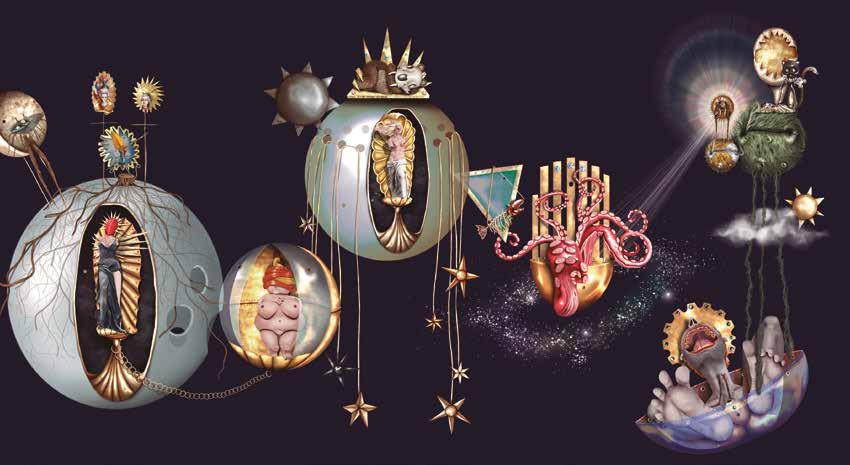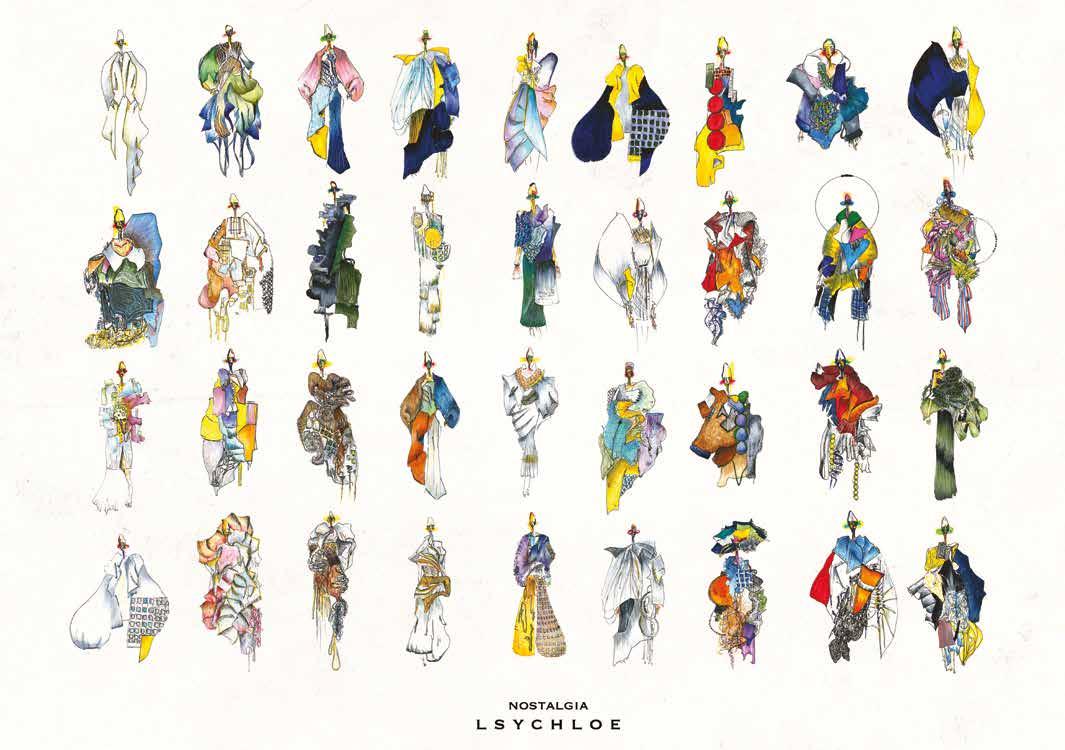
7 minute read
Japón y Maldivas [Turismo
Japón y Maldivas,
los destinos más codiciados
Advertisement
Japan and the Maldives, the most desired destinations/Japan oder die Malediven, die am meisten nachgefragte destination
R: Jen Munar F: Erik Eastman, Bantersnaps, Shifaaz Shamoon
Uno de los miradores más altos del mundo, marcas de ropa exclusivas, parques de atracciones megalómanos y una gastronomía en la que destaca, por encima de todo lo demás, el sushi.
Son sólo algunas de las razones que han catapultado a Japón al primer puesto de la lista de lugares predilectos para los viajeros de lujo.
Uno de los mayores secretos del país nipón no es otro que haber dado con la forma para desestacionalizar el turismo y conseguir, de esta manera, una mayor sostenibilidad para el lugar y sus habitantes. En un segundo puesto, aunque no muy alejado de Japón, se encuentran Las Maldivas, un destino ansiado por turistas de lujo que buscan relajarse en el paraíso y perderse en arenas blancas y aguas cristalinas. De acuerdo con Observatur, el observatorio nacional del turismo, los turistas de lujo acostumbran a realizar entre dos y tres viajes al año, normalmente acompañados por su pareja y gastando una media de 5000 euros por persona. De hecho, muchos de ellos invierten parte del presupuesto en una agencia de viajes, ya que se ha comprobado que más del 40% de este tipo de consumidores contratan sus viajes con ellas.
Y tú, ¿elegirás Japón o Las Maldivas?
One of the highest viewpoints in the world, exclusive clothing brands, megalomaniac amusement parks and cuisine in which sushi stands out above all else.
These are just some of the reasons that have catapulted Japan to the top of the list of favourite destinations for luxury travellers.
One of the biggest secrets about Japan is none other than having found a way to adjust the seasonality of incoming tourism and thus achieve greater sustainability for the country and its inhabitants.
In second place, and not far behind Japan, are the Maldives, a destination longed for by luxury travellers wishing to relax in paradise and lose themselves in white sands and crystal-clear waters.
According to Observatur, the national tourism observatory, luxury travellers tend to make between two and three trips a year, usually accompanied by their partner, and spend an average of 5000 euros per person. In fact, many of them invest part of that budget in the services of a travel agency, as surveys show that more than 40% of luxury travellers book through agents.
What do you think: Japan or the Maldives?
Einer der höchsten Aussichtspunkte weltweit, exklusive Modemarken, megalomanische Vergnügungsparks und eine Küche, in der Sushi unter allen anderen Gerichten den Spitzenplatz einnimmt.

Dies sind nur einige der Gründe, weswegen Japan an die Spitze der beliebtesten Destinationen für Luxusreisen gerückt ist.
Eines der größten Geheimnisse von Japan besteht darin, dass das Land einen Weg gefunden hat, die Saisonalität der einreisenden Touristen anzupassen und so eine verbesserte Nachhaltigkeit für sich und seine Bewohner zu erreichen.
Auf dem zweiten Platz, und damit ganz nah an Japan, liegen die Malediven, eine bei Luxusurlaubern, die sich im Paradies entspannen und weiße Sandstrände und kristallklares genießen möchten, oft nachgefragte Destination.
Laut dem Observateur, der nationalen Tourismus-Beobachtungsstelle, neigen Luxusurlauber zu zwei oder drei Reisen im Jahr, üblicherweise in Begleitung ihres Partners, und geben pro Person rund 5.000 Euro aus. Tatsächlich investieren viele von ihnen einen Teil dieses Budget in die Dienste einer Reiseagentur, da Umfragen gezeigt haben, dass mehr als 40 % aller Luxusurlauber über Agenturen buchen.
Was meinen Sie: Japan oder die Malediven?

NOCHE DE SAN JUAN

R: Jen Munar F: Alan Chen
La noche más corta del año The shortest night of the year Die kürzeste Nacht des Jahres
En la víspera de San Juan, la noche del 23 al 24 de junio, en España y muchos otros países europeos y de América Latina se celebra, nada más y nada menos, que la llegada del ansiado verano.
En la noche más corta del año la tradición invita a realizar ciertos rituales, a visitar la playa y, sobre todo, a disfrutar en compañía de familiares y amigos.
Algunas de las tradiciones más populares son hacer hogueras y saltarlas como símbolo de purificación, bañarse en el mar durante la madrugada y saltar nueve olas (lo que augura salud para todo el año) y, en países de América Latina como Chile, colocar tres patatas debajo de la cama: una pelada, una sin pelar y la tercera pelada a la mitad. De acuerdo con su tradición, si a la mañana siguiente la primera que extraes es la pelada, tu futuro estará lleno de problemas; si extraes aquella que está a medio pelar, no será ni bueno ni malo, y si sacas la que está sin pelar tendrás un año repleto de buena fortuna.
En España, las celebraciones de San Juan más populares son las de Menorca. Miles de jóvenes, y no tan jóvenes, se reúnen cada año en Ciudadela para disfrutar de la llegada del verano en unas fiestas que se alargan durante casi una semana.
En ellas también hay hueco para la tradición, ya que se llevan a cabo celebraciones populares como los Jocs del Pla o los “bots” de los caballos, una actividad en la que los caballos de raza menorquina se elevan sobre dos patas y atraviesan una multitud.
On the eve of San Juan, the night of June 23 to June 24, Spain and many other European and Latin American countries celebrate the arrival of summer.
On the shortest night of the year, tradition invites us to perform certain rituals, to visit the beach and, above all, to enjoy the company of family and friends.
Some of the most popular traditions are making bonfires and jumping over them as a symbol of purification, swimming in the sea in the early morning and jumping over nine waves (which leads to good health for the entire year). In Latin American countries like Chile, three potatoes are placed under the bed: one peeled, one unpeeled and the third half peeled. According to the tradition, if the one you pick up the following morning is peeled, your future will be full of problems, if it’s half-peeled, it will be neither good nor bad, and if it’s unpeeled, you will have a year full of good luck.
In Spain, the most popular San Juan celebrations are in Menorca. Thousands of young, and not so young people meet every year in Ciudadela to enjoy the arrival of summer at a festival that lasts for almost a week.
There is also plenty of time for traditions, as popular celebrations such as the Jocs del Pla or the bots, when Menorcan horses rise up on their hind legs and walk through the crowd.
Am Vorabend von San Juan, der Nacht vom 23. auf den 24. Juni, feiern Spanien und viele andere Länder Europas und Lateinamerikas die Ankunft des Sommers.
Während der kürzesten Nacht des Jahres lädt uns die Tradition ein, bestimmte Rituale zu vollziehen, an den Strand zu gehen und vor allem die Gesellschaft von Familie und Freunden zu genießen. Einige der beliebtesten Traditionen bestehen im Errichten von Freudenfeuern, über die man dann springt, um sich symbolisch reinigen, dem Schwimmen im Meer am frühen Morgen und dem Springen über neun Wellen (was gute Gesundheit im ganzen Jahr verspricht). In lateinamerikanischen Ländern wie Chile werden drei Kartoffeln unter das Bett gelegt: eine ist geschält, eine ist ungeschält und die dritte ist teilweise geschält, teilweise ungeschält.
Wenn man laut der Tradition am nächsten Morgen die geschälte Kartoffel hervorholt, wird die eigene Zukunft voller Probleme sein, greift man zur teilweise geschälten Kartoffeln, sieht die Zukunft weder rosig noch schlecht aus und wenn man die ungeschälte Kartoffel in der Hand hält, hat man ein Jahr voller Glück vor sich.
In Spanien finden die beliebtesten Feierlichkeit auf Menorca statt. Tausende von jungen und nicht mehr ganz so jungen Menschen treffen sich jedes Jahr in Ciudadela, um die Ankunft des Sommers mit einem Fest zu feiern, das fast eine ganze Woche lang dauert.
So bleibt genug Zeit für die Traditionen, zum Beispiel die bekannten Feierlichkeiten wie die Jocs del Pla oder die bots, bei denen sich menorcische Pferde auf die Hinterbeine stellen und durch die Menge laufen.






